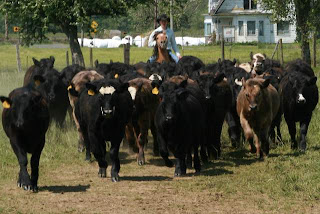Companionship and Comfort
Sheep are interesting animals and are quite different than cows or horses. Although they possess some very obvious distinctions like sporting furry fleece coats and saying “baaa” instead of “neigh” or “moo”, they also have some very unique attributes like their desire for companionship and comfort.
Sheep are very social creatures. They are rarely ever seen by themselves. They always desire to be with their companions whether they are munching grass, frolicking in the sun, or exploring the farthest boarder of their pasture. In shepherd’s vernacular this natural tendency is called their “heard instinct.” Because most of our grass is taller than the sheep’s heads, if they get too busy eating and forget to pay attention, they can get separated from the rest of the flock. When they realize that none of their companions are to be seen they will set to bawling and running until they find the rest of the pack.
Hand in hand with this desire for companionship is their desire for comfort and protection. Because sheep are smaller then cows or horses they are more susceptible to the dangers of prowling nocturnal predators. If left to follow their own instinct, when it becomes evening sheep will gather together as a flock and all lay down in a close area. In this way they look like a bigger mass and do not appear to be an easy dinner catch. Here at Bradrick Family Farms we try to accommodate this need for protection by every night bringing our sheep into a warm barn where there is no fear of danger. Being creatures of habit, our sheep have grown accustomed to their lodging accommodations. Last night I went out just before dark to put them in, and they were all standing at the gate with a look of anticipation on their faces — waiting for me to open the barn door and let them in.













 Sheep will also do strange things when they are feeling the energy of spring. Their mood will change from being peaceful and curious to frantic and frenzied. All at once they will leap with all four legs off the ground and then run in circles, butt heads, and wag tails. A sheep gripped with this infectious mood will make the most formidable stoic burst out laughing.
Sheep will also do strange things when they are feeling the energy of spring. Their mood will change from being peaceful and curious to frantic and frenzied. All at once they will leap with all four legs off the ground and then run in circles, butt heads, and wag tails. A sheep gripped with this infectious mood will make the most formidable stoic burst out laughing.